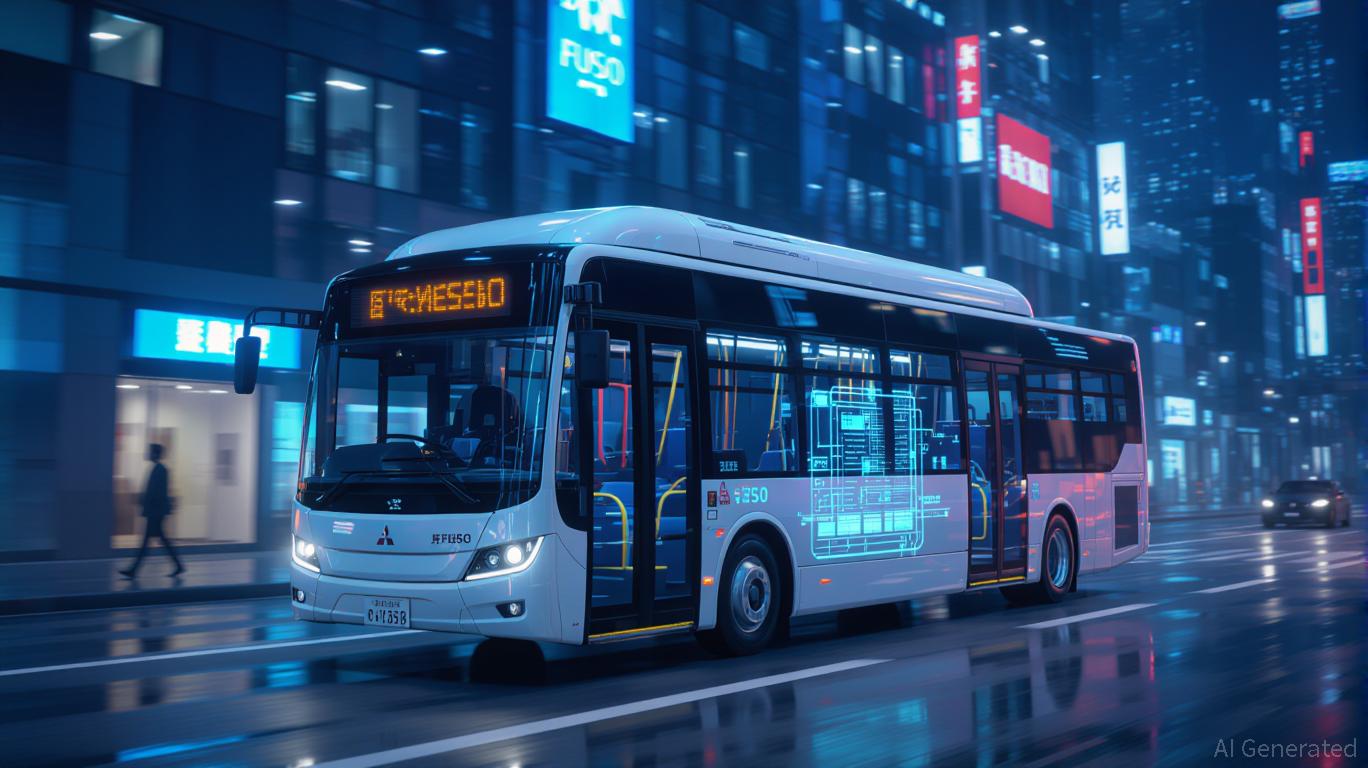
Foxconn’s recent partnership with Mitsubishi Fuso Truck and Bus Corporation marks a pivotal moment in the global electrification race, particularly in Japan’s high-growth zero-emission bus market. By leveraging its modular EV platform and contract design capabilities, Foxconn is positioning itself as a critical player in a sector poised for exponential expansion. For investors, this collaboration underscores the company’s strategic pivot from a contract manufacturer to a key architect of the EV ecosystem, with implications that extend far beyond its traditional electronics supply chain.
A Market on the Brink of Transformation
Japan’s zero-emission bus market is accelerating rapidly, driven by aggressive government targets to achieve carbon neutrality by 2050 and a hydrogen-centric infrastructure strategy. The country’s hydrogen bus market alone is projected to grow at a 27.5% CAGR through 2035, while the electric drive bus segment is expected to expand at 22.5% annually. These figures, coupled with Japan’s early adoption of electric buses (over 50% market share in 2023), highlight a fertile ground for innovation and investment.
Foxconn’s entry into this market via its partnership with Mitsubishi Fuso is not merely a product sale—it’s a calculated move to establish a localized production footprint and brand equity in a region where hydrogen and battery technologies are converging. The Model T and Model U buses, already tested in Taiwan, will be rebadged under the Fuso brand and launched in Japan by 2027. This strategy mirrors Foxconn’s broader EV roadmap, which includes localized manufacturing hubs in the U.S. and Japan by 2027–2028, aligning with global trends toward regional supply chains.
Strategic Synergies and Competitive Advantages
Foxconn’s partnership with Mitsubishi Fuso is underpinned by a unique value proposition: modular design flexibility and rapid scalability. The Model B platform, used in its collaboration with Mitsubishi Motors for an electric crossover, exemplifies this approach. By enabling quick adaptation to right-hand-drive markets and varying battery configurations, Foxconn reduces development timelines and costs for automakers—a critical edge in a sector where time-to-market is paramount.
Moreover, Foxconn’s investment in automotive software and user experience (UX) differentiates it from traditional EV suppliers. The company’s acquisitions of startups like Sonatus and Kneron signal a shift toward end-to-end solutions, including vehicle-to-grid (V2G) integration and AI-driven telematics. These capabilities position Foxconn to capture not just hardware but also the “software-defined vehicle” segment, a growing battleground for EV market dominance.
Navigating the Competitive Landscape
While Foxconn’s ambitions are bold, the Japanese EV market is not without challenges. Established players like BYD and EV Motors Japan have already secured early market share, leveraging China’s cost-competitive manufacturing base. However, Foxconn’s partnership with a major Japanese automaker offers a localized alternative, mitigating supply chain risks and aligning with Japan’s preference for domestic partnerships.
The recent merger of Mitsubishi Fuso with Hino Motors (a Toyota subsidiary) further strengthens this alliance. With Hino’s expertise in commercial vehicles and Toyota’s hydrogen infrastructure, the combined entity could accelerate the adoption of both battery and fuel cell buses. For Foxconn, this creates a dual opportunity: scaling battery-electric models in urban routes while supporting hydrogen-powered variants for long-haul applications.
Long-Term Implications for Investors
Foxconn’s EV strategy is a three-phase roadmap: proving manufacturing capabilities, securing legacy automaker contracts, and transitioning to end-to-end design services. The Mitsubishi Fuso deal fulfills the second phase, but the third—offering full vehicle design—could unlock the most value. By 2030, Foxconn aims to capture 40% of the global EV market, a target that, while ambitious, is achievable given its current trajectory.
For investors, the key metrics to monitor include Foxconn’s EV revenue growth, gross margins, and R&D spending. The company’s recent shareholder statements emphasize that EVs will become a “major growth driver,” a shift that could reinvigorate its stock after years of reliance on smartphone manufacturing. Additionally, the performance of Japanese EV infrastructure stocks, such as those of hydrogen refueling station operators, could serve as leading indicators of market adoption.
Conclusion: A Win-Win for Innovation and Investment
Foxconn’s partnership with Mitsubishi Fuso is more than a business deal—it’s a strategic bet on the future of mobility. By combining its manufacturing prowess with Japan’s hydrogen and electrification policies, Foxconn is not only securing a foothold in a high-growth market but also reshaping the EV supply chain. For investors, this represents an opportunity to capitalize on a company that is evolving from a component supplier to a systems integrator, with the potential to redefine the economics of electric transportation.
As the zero-emission bus market accelerates, Foxconn’s ability to scale localized production, innovate in software, and navigate regulatory landscapes will be critical. Those who recognize this transformation early may find themselves positioned to benefit from a company that is no longer just building gadgets—but building the future.






